Drills
All of these drills are designed to improve your skills so you can play the game at a higher level. Grab a partner, get to work and do it with a spirit of cooperation.
Check back often for more tips!
Click on the plus signs to view the tips.
All of these drills are designed to improve your skills so you can play the game at a higher level. Grab a partner, get to work and do it with a spirit of cooperation.
Click on the plus signs to view the tips.
Stand 6 feet from the corner. Start the drill by hitting a forehand into the right side screen at an angle so that it rebounds into the left side screen. Let the ball bounce. The ball will now be on the left side of your body. hit it back into the left side screen with your backhand (if you’re a righty) and it will angle into the right side screen and bounce for you to hit a forehand. Repeat. Once you have mastered that move, on to doing the same drill but do not let the ball bounce. Keep your hands up in front and volley the ball slightly up. Great warm up drill. Improves understanding of angles, hand eye coordination, reflexes, and control.
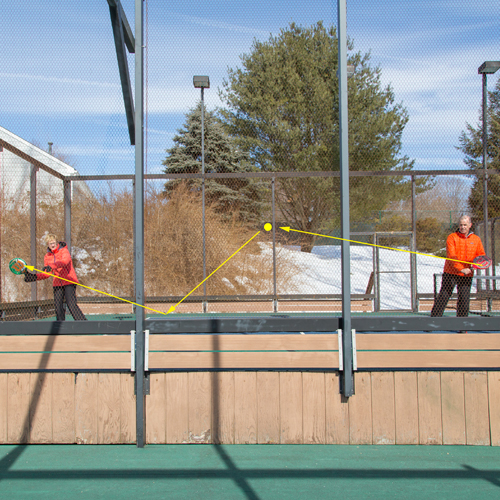
The screens are divide into panels. Mike is standing in front of panel #1, panel #2 is empty, and I’m standing in front of panel #3. Mike starts the drill by hitting a controlled forehand into panel #2, because of the angle it will come out to me in panel #3. I’ll let the ball bounce and then hit it back into panel #2 and it will come out to Mike at panel #1. Repeat. This drill helps give you an understanding of angles off of the screens. You have to prepare early, take little adjustment steps to get into a balanced position to hit the ball coming off an angle.
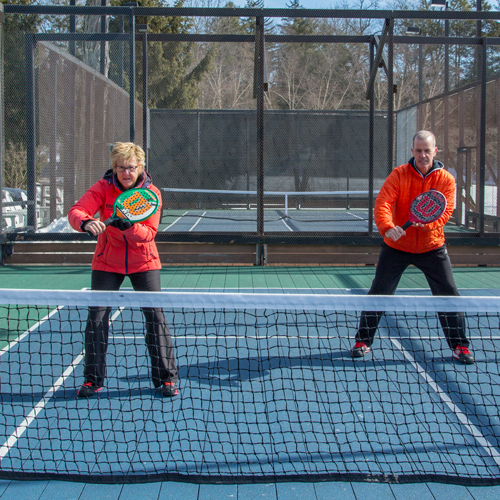
Position when the ad court player is lobbing.
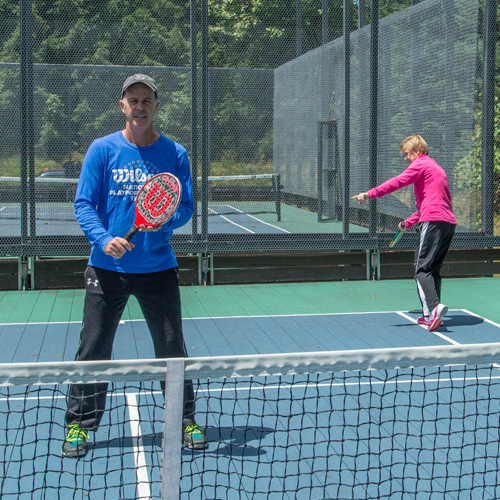
Running down the lob is a transition shot. If you try to hit a winner, you’ll make too many mistakes. Instead, look to find gaps in your opponents’ teamwork as they come to the net. If the opponents come charging up on the net, the lob will be a very effective shot. If they are the casual type and wait to see if their lob is in before taking the net, the drive could be a good choice. As long as you1ve put your team in a position to play one more shot, you’re playing smart paddle!
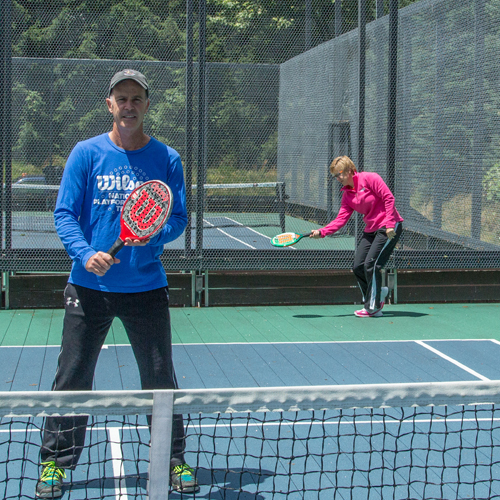
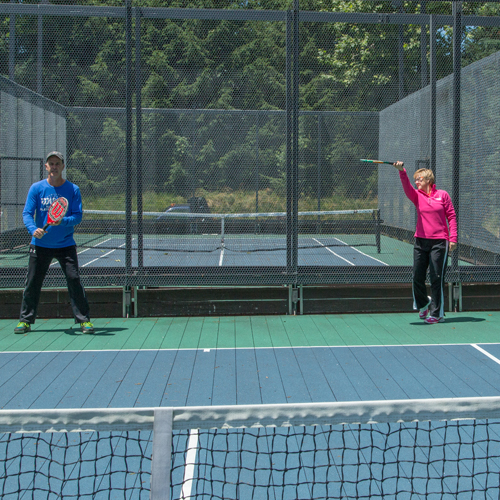
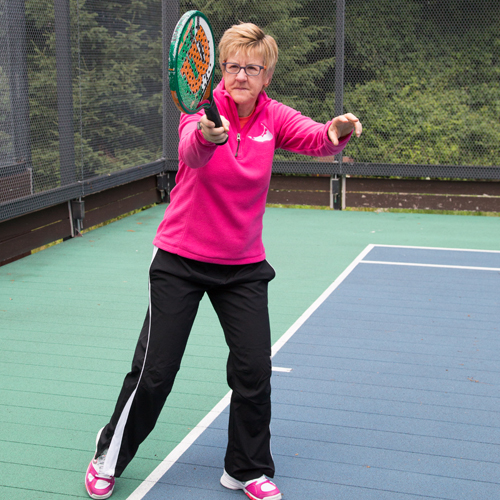
The Low Chip
The combinations of these shots complement each other. One shot sets up the other. The key to these two shots is to make the set up look the same, so you can disguise what shot you’re hitting next. Both shots require that you rotate your shoulders early, taking your paddle back at shoulder height. Take a short compact swing with a high point of contact. Swing motion should begin once the ball bounces. (1) Take the ball off the deck on the way up. You can disguise the shot because of the early, short swing.
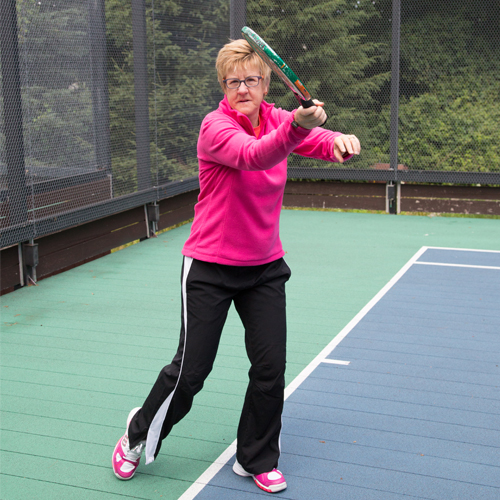
To hit the Block Lob open the paddle face slightly just before the point of contact. By disguising your shots your opponents have to wait to see what you are going to hit. Now you have them reacting to you.
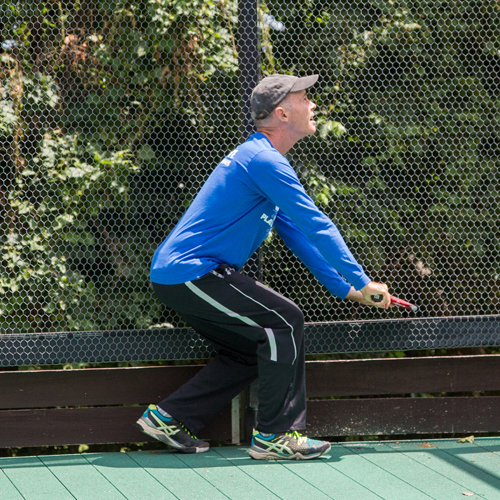
The waterfall overhead is a down up overhead hit short in the court that bounces high in the screen and can be very difficult to return. If you let it play itself out, you end up looking like “the victim”.
Am I building my point? No. It is pure defense here. If you are hoping the ball bounces out of the court, this is not a very offensive mindset. You need to add the “spike” to your arsenal of weapons. Here is how to handle the “waterfall overhead”.
There are few shots that are as feared or aggressive as the spike. The spike is a shot hit by the backcourt player who sees the net person hitting a down up overhead, aka “the waterfall”. He moves in, up the side screen and jumps up, catching the ball on the way up and hits an overhead. This play will only work if the “spiker” moves up by the second post on the side screen early enough before the ball bounces over his head, and his partner is ready to cover his corner.
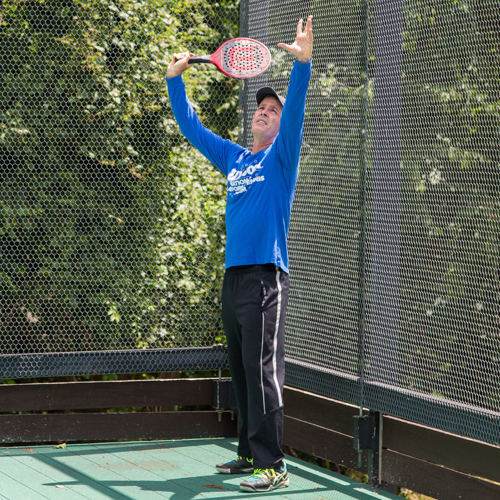
I see that the lob is shallow and that the opponent directly in front of me (not on the T) is planning on a down up overhead. I have moved my position next to the side screen by the second post before he hits the ball. This move will encourage him to use more wrist snap and he could easily bounce the ball over the screen and out of the court.
I am preparing to attack. Arms up, shoulders turned. I now need to time this shot so that the ball is in front of me and up at my contact point (12 o’clock). A little bit left of 12 o’clock is good for pronating. Pronation is a movement of the forearm inward. This creates more power.
There are 2 choices where to hit the spike. I could hit it directly at the player in front of me, or I could spike it at his partner. Hitting the spike at the partner is good for 2 reasons. You will be making the partner pay for the bad shot, and there is more room hitting cross-court.
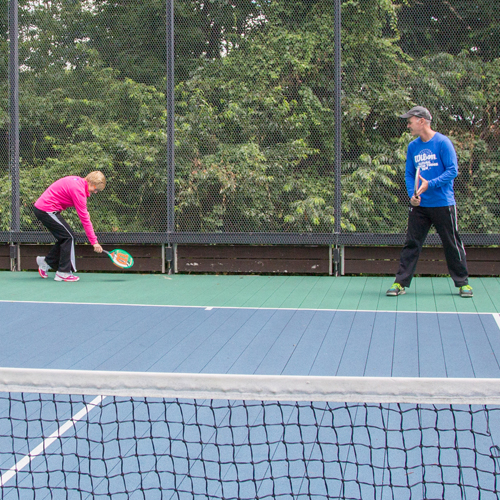
The first shot should be hit deep down the middle so the deuce court player has to move back and out towards the middle of the court, keeping them behind the baseline.
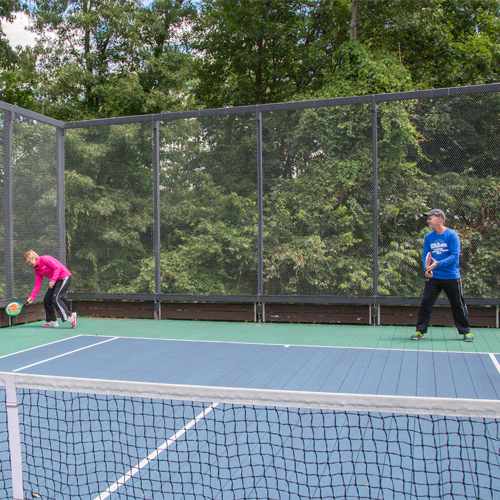
The second shot is then hit by aiming deep in the court along the singles line two feet from the baseline.
This shot is forcing the deuce court player from point A to chase down a back side screen (point B). The overhead should be hit hard enough to make the screen, but not so hard as to create an opportunity for the backcourt player to attack.

The third shot is hit straight and deep in line with the second post.
You now have your opponents chasing your shots.
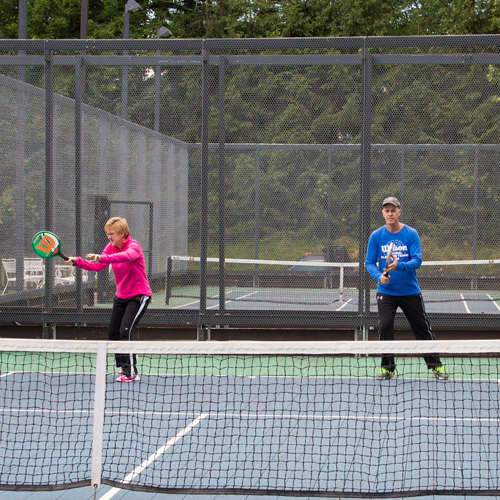
The concept is simple and requires a touch of common sense. The baseline blitz is predominantly used when your partner is able to attack the serve return or short high ball consistently with a low drive. At most levels of play, the server fails to completely close on the net for the first volley. With a dipping serve return, the volley has to be hit up.
The key questions you must resolve before each blitz are:
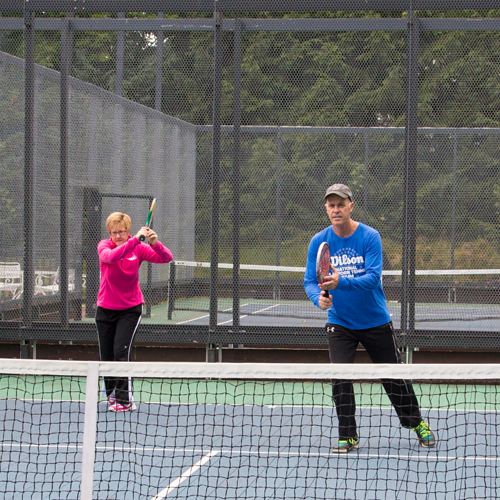
3. Is my opponent failing to close on the net?
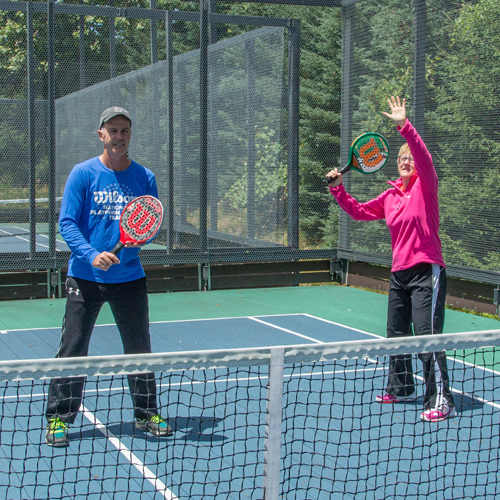
Attack Overhead
The attack overhead is just that. Generally hit off of a short lob, the best place to hit the attack overhead is low into the corner of the ad court service box, which will move from the side to back screens.
To hit this shot, imagine you are shooting a bow and arrow…
* Exaggerate your left shoulder turn.
* Drop your right foot back (this completes your turn).
Put both hands up, set your paddle by your right temple and point to the ball with your left hand.Your point of contact is in front of you. Let the ball drop so you can hit the back of the ball (you do not want to hit the top of the ball because you want the ball to hit low in the screen) Follow through until your right thumb touches your left thigh.
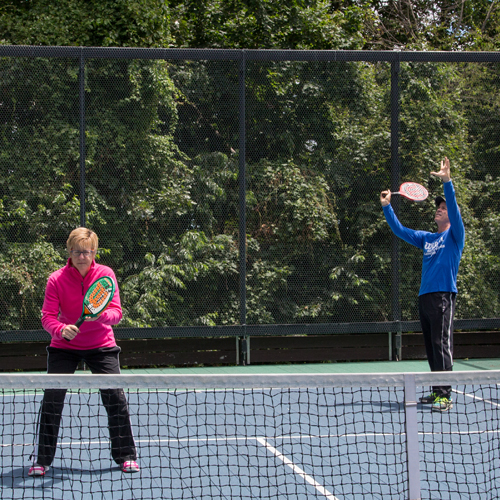
Push Overhead
On this shot you set up the same way as the attack overhead, but your point of contact wi II be lower so you can send the ball back slightly up off your paddle…slowly. This will send the ball deep in the court. Aim for the deuce court player’s backhand. You want to place both push and attack overheads on the court so your opponents can’t be offensive on their next shot.
The worst place to hit your push overhead is into the corner of the deuce court service box. This would be a short ball that your opponents will step into and drive (or lob).
Remember that…
* Where you are hitting your overheads from determines which overhead to use.
* If your opponents lob short, use your attack overhead.
* If your opponents lob deep, use your push overhead.
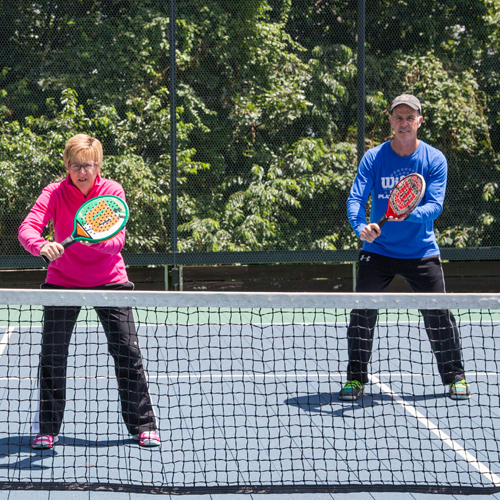
Correct net positioning when the ball is on the ad side.
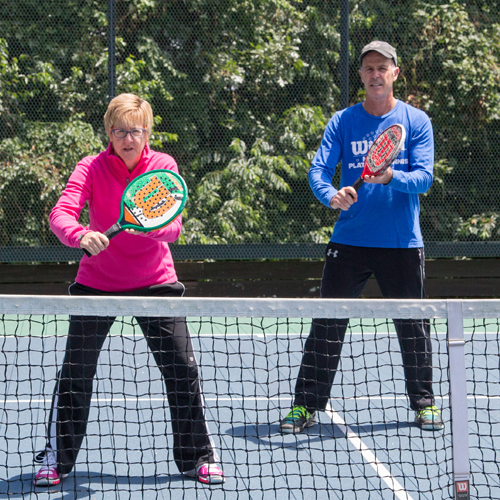
When the player at net lines up with the ball.
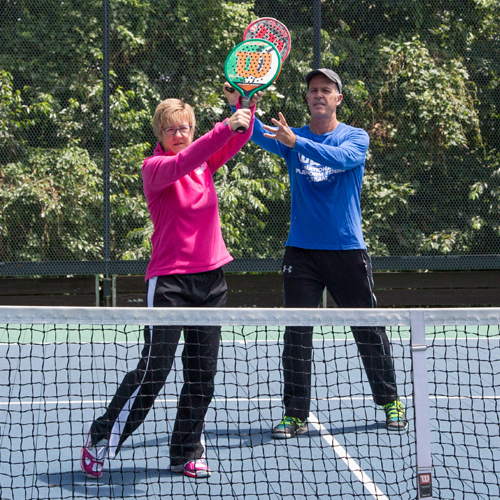
This floater traveling between the players should be Mike’s overhead. It’s a slow ball between us and it’s on his forehand.
If Gerri takes it it’s a high backhand and leads her third open for attack.
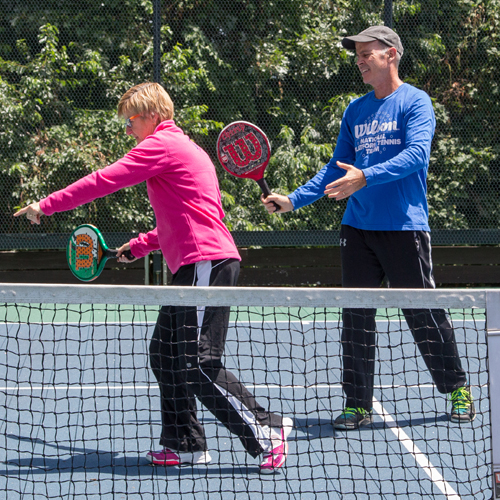
The ad player can drive the ball down the line.
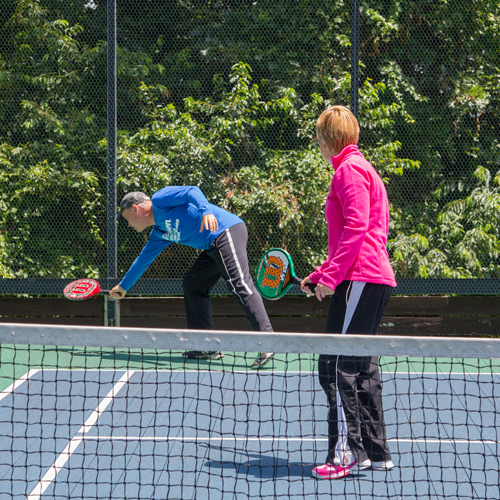
Now your net team is scrambling.
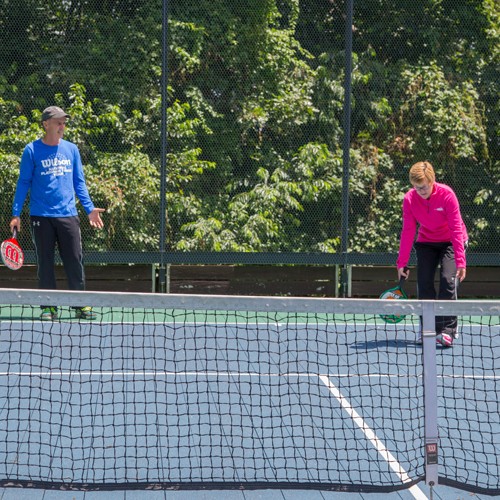
After Mike has to chase down that ball, Gerri now crosses and becomes the target.
This scenario was all caused by Gerri lining up with the ball instead of covering her third.
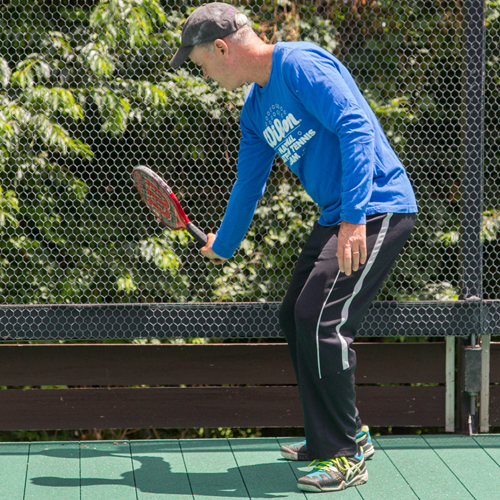
Sometimes we get caught with a low ball in the screen. The best way to get the ball in play is using the Flick. Bend low, eastern backhand grip held loosely.
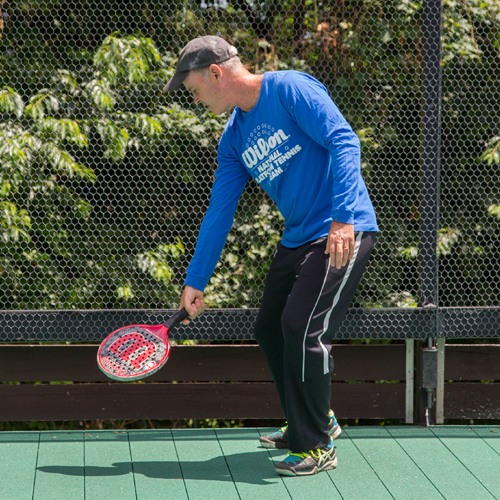
Mike’s thought is driving.
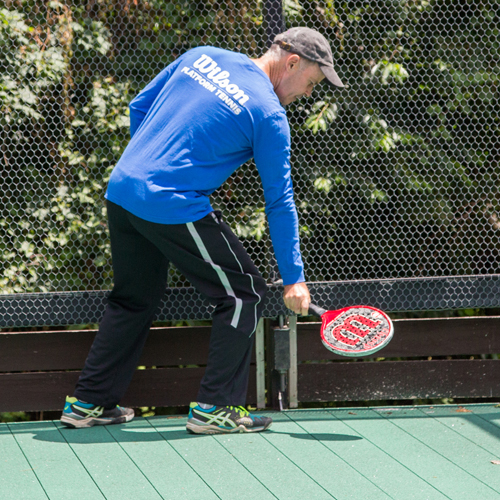
Sometimes we get caught with a low ball in the screen. The best way to get the ball in play is using the Flick. Bend low, eastern forehand grip held loosely.

Mike’s thought is driving.
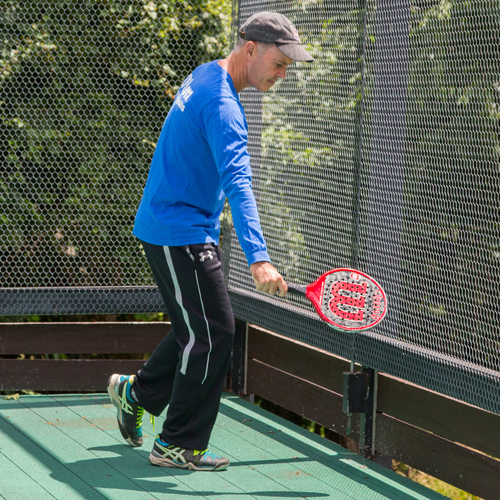
Content coming soon!
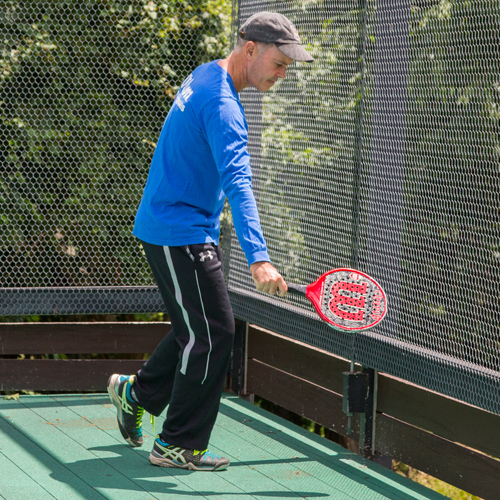
Step left with the left foot and allow the ball to travel out, set your contact point.
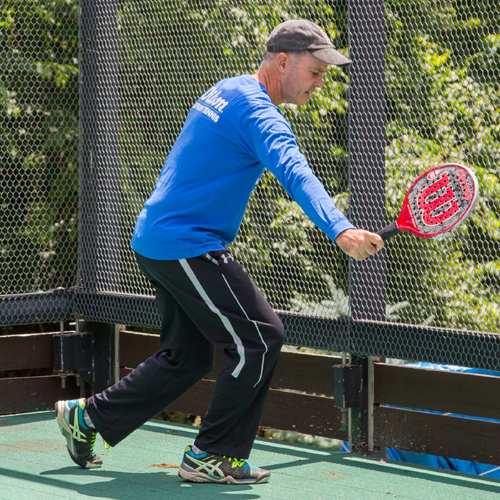
Guide the paddle forward and upward toward your target’.
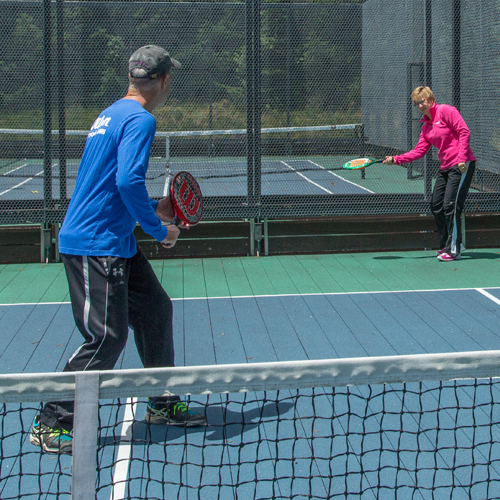
Mike’s eyes should always be forward either when Gerri is hitting an overhead or running down a lob.
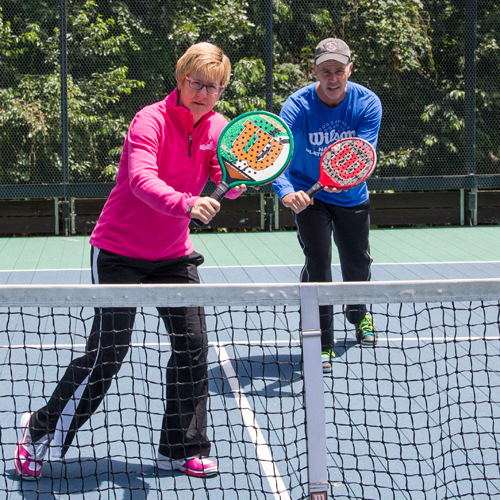
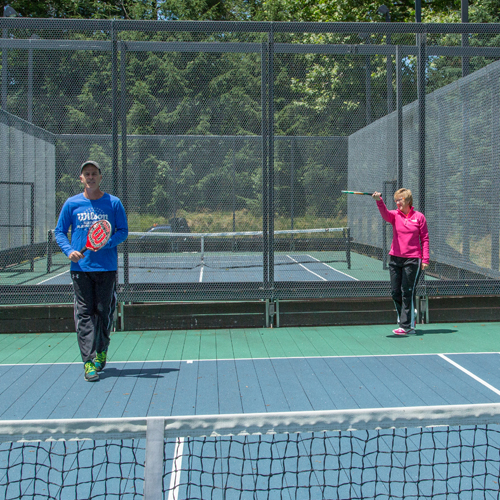
Running down the lob. Mike is backing up facing the play.
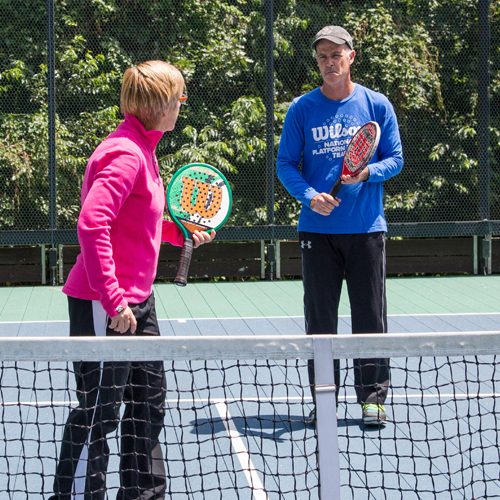
All successful teams make adjustments as the match is in progress, rather than playing with the wrong strategy.